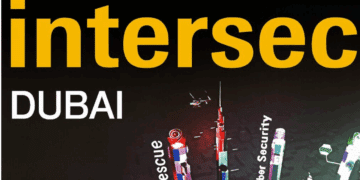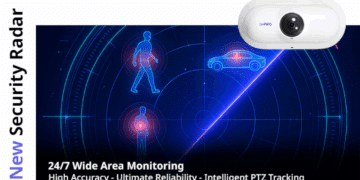Tim Roddy, VP Product Marketing, Mobile Threat Defense, Zimperium, explains how mishing is becoming a growing concern in the modern age
“Most would agree that the evolution of mobile devices over the last 10 years has been remarkable, including a significant impact to communication and productivity in the workplace.
“The combination of 5G technology, cloud-based business applications and device computing power has resulted in even the most basic mobile devices becoming essential tools for many employees who require access to sensitive data and applications. Consequently, the security risks associated with these ubiquitous devices are escalating dramatically.
“The research is clear: Cybercriminals are increasingly targeting mobile devices and applications within enterprises as a first-strike option for penetrating security defences, corporate networks and sensitive data.
“The massive MGM hack in 2023 is one such example of use of Vishing as the initial attack method, which then led to credential theft and eventually substantial business interruption and data loss.
“Combining the success of social engineering attacks with the unique features of mobile devices: voice calling, text messages, the camera, as well as corporate email on the device, these bad actors are finding users to be more vulnerable than ever.
“Collectively, these tactics contribute to what we refer to as “Mishing” – a broad spectrum of mobile-targeted phishing attacks that exploit mobile devices and applications to steal sensitive information and penetrate corporate networks.
“While mishing affects both consumers and organisations, its implications for enterprises and public sector entities are particularly concerning. Understanding the unique risks associated with mishing is critical to protecting corporate and public data, as well as maintaining overall mobile security.
What is Mishing?
“Mishing involves the targeting of mobile devices and users via email, text message, voice call or even QR codes for malicious actions that exploit various weaknesses within mobile environments, including unsafe user behaviour as well as minimal security on most mobile devices.
Common Mishing Tactics
- Mobile-targeted Email Phishing – “This attack is launched via a standard email message, but only executes the attack when a link (or attachment) is clicked by the user from a mobile device. If clicked from a standard endpoint device such as a laptop, the attack is aborted and the user is taken to a safe page such as Google.com.
- Smishing – “A targeted phishing attack that is delivered by text/SMS. Deceptive SMS messages lure victims into clicking on malicious links or sharing sensitive data. This type of attack has become more common as cybercriminals have seen success in duping users into unknowingly downloading malware to their device.
- Vishing – “Fraudulent voice calls used to trick users into divulging personal or financial information. Utilising a voice call, this type of attack is often used as a first point of contact to the victim to gain their confidence into taking further actions that leverage other attack vectors such as smishing. With the availability of cheap & sophisticated AI, Vishing attacks have become much more attainable for even novice attackers.
- Quishing – “Mobile cameras are exploited to deliver phishing attacks through malicious QR codes. By their nature QR codes obfuscate their destination and quishing leverages the false confidence mobile users have in QR codes to direct them to phishing sites and other destinations where malware and other attacks may be launched.
Why Mishing is a Growing Threat for Organizations
“Several factors contribute to the increasing prevalence of mishing among enterprises and public sector organisations:
- Increased Mobile Usage: “With the widespread use of smartphones for communication, data access and collaboration provides cybercriminals with a vast target pool.
- Remote Work on Personal Devices: “The shift to remote work has led to a greater reliance on mobile devices for accessing corporate networks and sensitive information. Employees and personnel often use their personal mobile devices to perform work-related tasks, increasing the attack surface for cybercriminals.
- Expanded Access to Sensitive Data: “With more corporate and public sector data being accessed via mobile devices and cloud-based apps, the risk of exposure from mishing attacks includes credential theft and even hijacking of one-time-passwords (OTP), providing attackers with unfettered access to corporate networks.
- False Sense of Security: “Many users (and organisations) consider mobile devices to be more secure than desktops and laptops, leading to less cautious behaviour when handling suspicious messages or links.
- Limited Security Measures: “The majority of employee (and personal)mobile devices are not protected by a mobile threat defense solution, making them extremely susceptible to mishing and other sophisticated attacks.
How to Protect Against Mishing
“To safeguard against mishing, enterprises and public sector organizations should adopt the following best practices:
User Best Practices
- Be Skeptical of Mobile Messages: “Treat unsolicited messages with caution. Verify the legitimacy of the sender before responding or clicking on any links to prevent unauthorised access to sensitive information.
- Avoid Clicking on Unknown Links: “Refrain from clicking links from unknown or unverified sources. Instead, manually enter the URL into your browser to ensure you are visiting a legitimate site and safeguarding corporate data.
- Exercise Caution with QR Codes: “Be wary when scanning QR codes from even trusted sources. Always review the destination URL before proceeding to maximise exposure to phishing sites.
- Maintain Updated Software: “Regularly update device operating systems and applications to patch known vulnerabilities and protect against new threats.
Organisational Best Practices
- Deploy Comprehensive Mobile Threat Defense: “Utilise advanced mobile security solutions that provide real-time mobile threat protection for both known and zero-day threats, blocking malicious activities such as dangerous links, attachments or malware downloads before they can compromise the user and the device.
- Implement Mobile App Management: “Ensure that all applications used within the organisation are properly vetted for vulnerabilities, including 3rd-party and in-house developed apps. Enforce policies to identify and block apps that request suspicious or excessive permissions that may compromise security.
- Educate Employees: “Organisations should provide regular training on recognising and avoiding mishing attempts. Employees should be aware of the risks and know how to handle suspicious messages.
“Mishing is an insidious and increasingly common attack vector in today’s mobile-centric world, particularly for enterprises and public sector organisations that rely on mobile devices for remote work and access to sensitive information.
“By understanding the nature of mishing and adopting proactive mobile security measures, organizations can better protect their critical information from cybercriminals. At Zimperium, we are dedicated to providing the tools and knowledge necessary to stay secure in the face of evolving mobile threats.
“For more information on how to protect your organisation from mishing and other mobile threats, visit our website or contact our team at Zimperium. We’re here to help you navigate the complexities of mobile security with confidence. Stay vigilant and informed. Mobile security is an ongoing process that requires continuous attention and action.”
To read more Zimperium news, click here.





